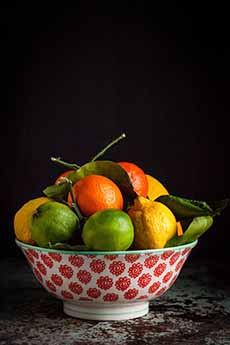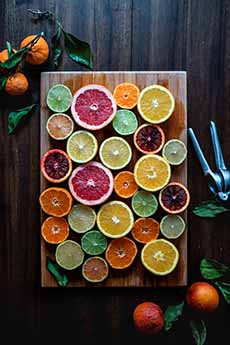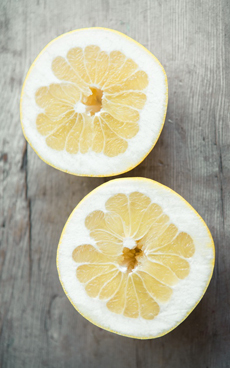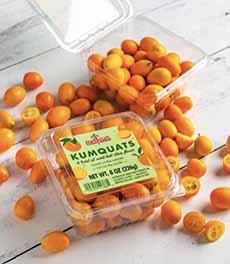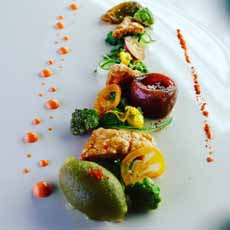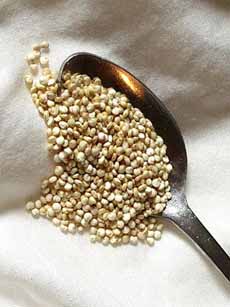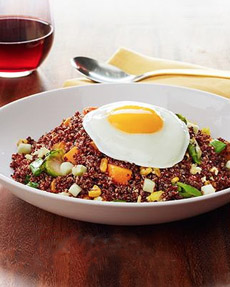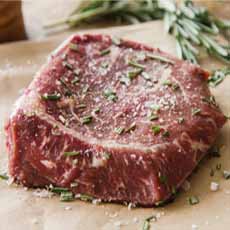
[1] Carbonara pizza uses two ingredient of Spaghetti Carbonara: bacon and eggs. Here’s the recipe from Today.com.
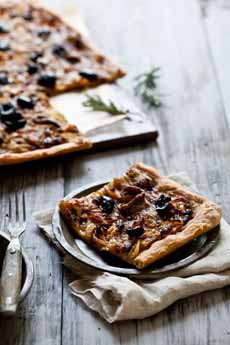
[2] Pissaladière, a specialty of Nice, France, made with niçoise olives, anchovies, onions and Provençal herbs. According to a former mayor of Nice, the layer of onions on a pissaladière should be half as thick as the crust. Here’s the recipe from Saveur.
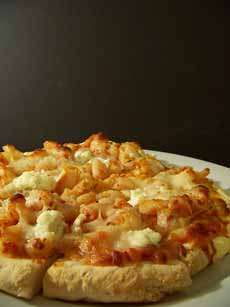
[3] A baked ziti pizza. The idea is said to have been born as a way to use leftover ziti. Here’s the recipe from Hey That Tastes Good.

[4] Pizza cones. Here’s the recipe from Une Cuillere En Bois (use Translate.Google.com if you don’t read French).
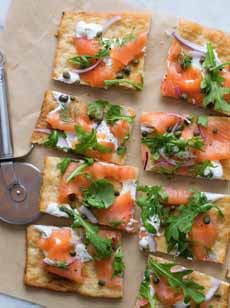
[5] Smoked salmon pizza. Here’s the recipe from Spoon Fork Bacon.
|
|
The second week in January is National Pizza Week, February 9th is National Pizza Day/World Pizza Day and October is National Pizza Month.
In fact, there are 11 pizza holidays in the U.S. Here’s the full list.
A couple of years ago, Food Republic sent us a large infografic with a global look at 40 different ways to eat pizza.
We didn’t think the infographic worked in our format, but we [finally!] transcribed it. We present them to you in alphabetical order.
Pick something new to have this week. We’re going for a piece of Maltese pizza, and a piece of Frutti Di Mare chaser. If we knew where to find it, we’d have a sashimi pizza chaser after that.
> The history of pizza.
> All the pizza holidays.
THE DIFFERENT TYPES OF PIZZA
If not specified, the pies have a conventional crust.
Bagel Pizza: tomato sauce, cheese and pepperoni on bagel halves.
Baked Ziti Pizza: cooked ziti, tomato sauce, mozzarella, ricotta.
Breakfast Pizza: sausage, cheddar, scrambled eggs topped with bacon.
Carbona Pizza: guanciale, pecorino-romano cheese, heavy cream, scallions, black pepper, eggs.
Calzone*: bread dough folded over meat, cheese and vegetables, and baked.
Cauliflower Crust: cooked cauliflower mixed with egg and cheese, baked, topped, then baked again.
Chicago Pizza/Deep Dish Pizza: crispy deep dish, cheese, tomato sauce.
French Bread Pizza: French bread sliced lengthwise, tomato sauce, cheese, pepperoni.
Frutti Di Mare Pizza: tomato sauce, mussels on the half shell, clams, octopus, squid, shrimp.
Detroit Pizza: A rectangular pie with a thick crust that is crispy and chewy, traditionally topped with tomato sauce and Wisconsin brick cheese that goes all the way to the edges (other toppings are used).
Grandma Slice: square slice, cheese topped with tomato sauce.
Greek Pizza: tomato sauce, mozzarella, feta, kalamata olives, fresh tomatoes, oregano.
Grilled Pizza: grilled dough, tomato sauce, cheese, toppings.
Hawaiian Pizza: tomato sauce, mozzarella, ham, fresh pineapple.
Jumbo Slice: an extra-large slice of pizza.
Kebab Pizza From Sweden: tomato sauce, cheese, sliced kebab meat, yogurt sauce, pepperoncini.
Lahm Bi Ajeen (lebanese meat pie): ground spiced lamb, fresh tomatoes, onions, garlic, pine nuts.
Mac & Cheese Pizza: elbow macaroni, cheddar, American cheese and mozzarella.
Maltese Pizza: potato, fresh tomato, anchovies, olives, rosemary.
Mexican Pizza: tortillas, enchilada sauce, tomatoes, black peans, scallions, Mexican cheese blend.
Neapolitan: San Marzano tomato sauce, buffalo mozzarella and fresh basil, cooked in a wood-burning oven.
New York Slice: thin crust, tomato sauce, cheese, oregano, chile flakes.
Pissaladière: bread dough, caramelized onions, anchovies, garlic, niçoise olives.
Pizza Cone: dough baked into a cone, filled with layers of tomato sauce and cheese.
Puck’s Smoked Salmon Pizza: crème fraîche, smoked salmon, black caviar, red onion, dill.
Quad City Pizza: malt dough, spicy tomato sauce, crumbled Italian sausage and mozzarella cheese, sliced into strips.
Quattro Formaggi: tomato sauce; mozzarella, gorgonola, fontina and asiago cheeses.
Roman Al Taglio† or Roman Pizza: thick square slices with various toppings, sold “by the cut.” See also Detroit Pizza.
St. Louis Pizza: yeast-free thin crust, sweet tomato-oregano sauce and Provel‡ cheese, “tavern-cut” into squares.
Salad Pizza: romaine, cucumbers, tomatoes, feta, olives, Greek dressing.
Scottish Pizza Crunch: half a pizza, battered, deep fried and served with French fries and vinegar.
Sicilian Pizza: thick but airy crust, tomato sauce, cheese, sliced into rectangles.
Stromboli*: meat, cheese and vegetables rolled into bread dough and baked.
Stuffed Crust Pizza: hot dogs or mozzarella sticks rolled and baked into the edge of the crust.
Sushi Pizza: deep-fried rice crust, sashimi, scallions, tobiko, spice mayo.
Tarte Flambée: thin crust, crème fraîche, white onions, bacon lardons.
Tavern-Style Pizza: a very thin crust cut into squares for easily handling with a drink.
Tomato Pie: thick crust, fresh tomato sauce, sprinkled with romano cheese.
Tuna & Sweet Corn: tuna, corn, red onion, cheddar cheese.
White/Bianca Pizza: garlic, ricotta, mozzarella.
White Clam Pie (“Abizza”): littleneck clams, pecorino-romano cheese, garlic, oregano, olive oil.
World’s Most Expensive Pizza: crème fraîche, salmon roe, black caviar, truffle, edible gold.
________________
*Calzones are basically folded pizzas, made from pizza dough and stuffed with the same ingredients as pizza – almost always tomato sauce and mozzarella cheese, usually ricotta, often pepperoni, and maybe some other cheese and cured meats – and then folded over like an omelet. Stromboli are more like pizza rolls.
†Pizza al taglio or pizza al trancio is a baked in large rectangular trays, and generally sold in rectangular or square slices by weight.
‡According to Wikipedia, “Provel is a white processed cheese particularly popular in St. Louis cuisine, that is a combination of cheddar, Swiss, and provolone cheeses, and tastes nothing like any of them.” It is sold in blocks, like supermarket cheddar, and is “rarely used elsewhere.”
|
